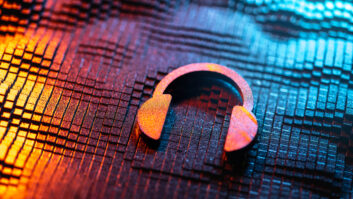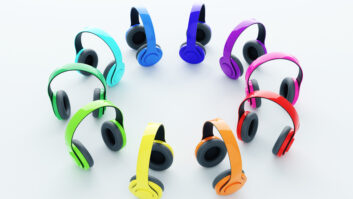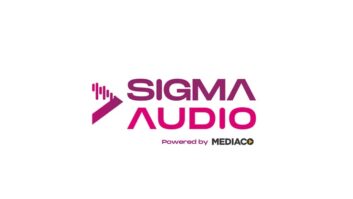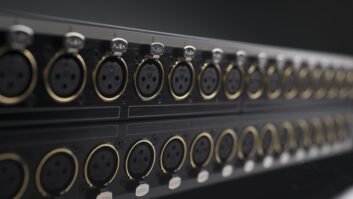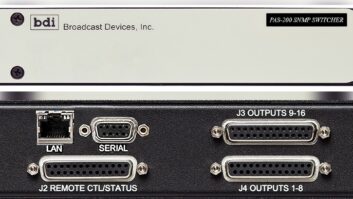(click thumbnail)In my never-ending search for neat audio toys to talk about, CEntrance’s diminutive MicPort Pro caused an instant smile: 24-bit//96 kHz audio from any mic-level source you can put in your pocket; all for $150.
I’d been waiting for something like this after looking at USB mics for clients who wanted to bypass the mic-mic preamp-input card topology for something simpler.
Røde’s Podcaster mic gets points for solving the USB latency issue by putting a headphone jack on the mic. But what about all the other non-USB mics out there? So many mics, so little time.
Enter the MicPort
The CEntrance MicPort Pro is a simple, 4.5-inch barrel with a female XLR on one end and a USB port, head-phone jack and phantom power switch on the other end.
(click thumbnail)
The phantom power supply current runs at a healthy 48V DC, 20 mA, more than enough for the hungriest condenser mic. There are rotary mic gain and headphone gain knobs on the barrel itself. The headphone amp gain is also ample.
When the USB cable is plugged in, a halo-like, translucent white ring around the unit lights up to let you know you are connected.
(click thumbnail)Aglow in Ty’s studio
You do need to know a little about the sound control panels in your computer and the preferences panels of your applications. They need to be visited to make sure MicPort Pro is recognized.
Everything worked fine with my OS X 10.4 Macs, but I did run in to a few small problems with the newer 10.5 Macs. The audio sounded garbled when I tried to record into Quicktime Pro 7.4.5. After I changed the Mac sound control panel to record and playback at 24-bit, 48 kHz Quicktime recorded and played back prop-erly.
Curiously, when I recorded into Apple Soundtrack Pro at 24/96 and exported the file, Quicktime Pro recog-nized the file as 24/96 and played it with no problems.
Quicktime’s record level metering can be overly conservative: peaking at anything over half scale resulted in clipped peaks. If you have apps that are not 24/96 compliant, scaling the system control panel back should work.
Soundtrack Pro 2.0.2 on my 10.5 Mac had an unusual but solvable latency issue. While monitoring with head-phones from MicPort Pro, I selected MicPort Pro from monitoring on the Soundtrack Pro panel. That resulted in delay. Switching monitoring to “none” in Soundtrack Pro got rid of the delay and I could still hear my voice and playback.
Garage Band ’08 was very obliging, allowing me to record a Sennheiser MD421 dynamic mic as a stereo or mono track. Skype and Apple’s iChat required that I switch to 48 kHz.
Product CapsuleCEntrance MicPort Pro Mic Level 24/96 USB Converter
Thumbs Up



- Works with any XLR mic or mic-level signal
- Phantom power
- No latency
- No power required
Thumbs Down
- I really can’t think of anything
Price
$149.95
Contact
CEntrance | (847) 581-0500 | www.centrance.com
With the Sennheiser MD421, I had to turn the MicPort Pro mic gain control up all the way while I was talking at a subdued conversation level with the mic about two inches from my mouth. Even with the gain full up, there was not a lot of circuit noise.
Using iChat and Skype, I talked with friends in faraway places with better-than-average quality. In fact, using the 421, I got comments that the audio I was sending over Skype was better than most cell phones.
More sensitive condenser mics required less gain and could be used at further distances. My Schoeps CMC641 condenser sounded good, but, unsurprisingly, not as good as it sounds when recorded through my studio’s pricey preamps and A/D converters.
Laptop users will appreciate that MicPort only uses 70 mA during startup and under 200 mA if no phantom powered mic is used. Different condenser mics require different amounts of phantom power and will draw ad-ditional current. Headphones with lower impedance pull more current than higher impedance headphones and higher headphone volume also pulls more current.
There’s a lot going on inside that little tube. Powering MicPort Pro with USB-available voltages requires two switching power supplies; one for the circuitry and light and one for the phantom power.
Being able to quickly convert any mic-level source, including phantom-powered mics, to a 24/96 digital signal with input adjustment and headphone monitoring makes MicPort Pro a handy tool.
